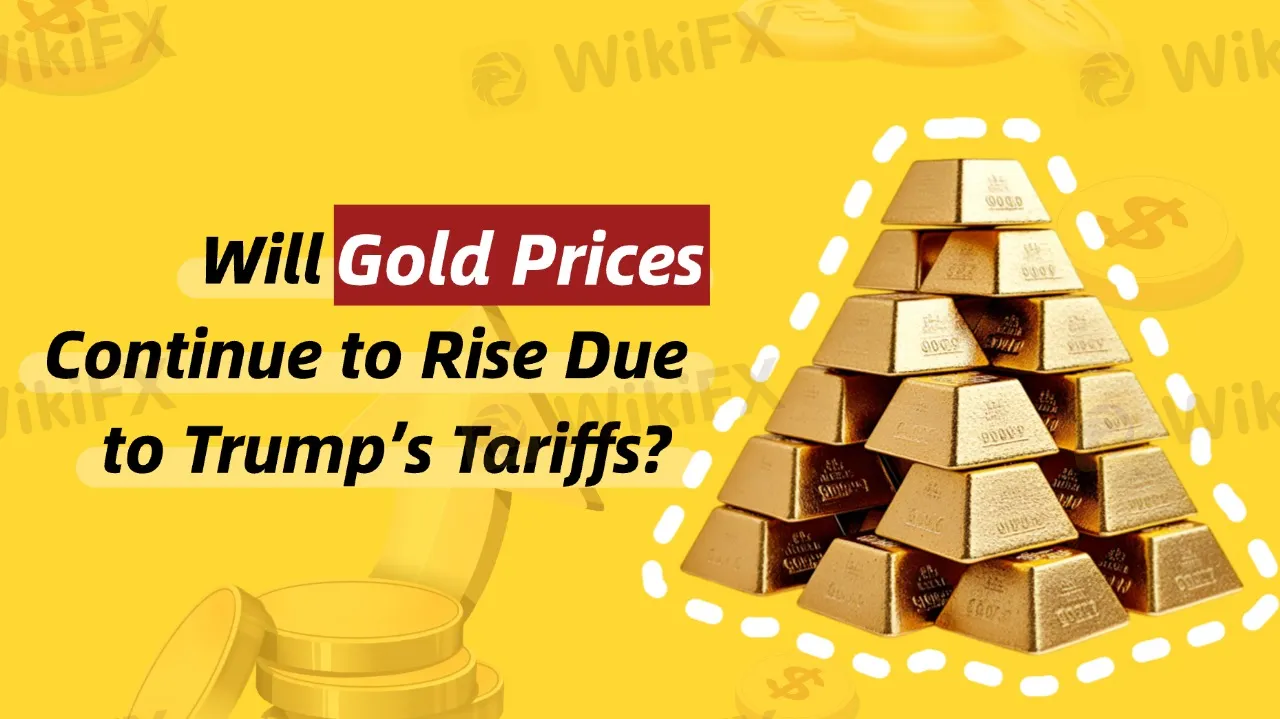简体中文
繁體中文
English
Pусский
日本語
ภาษาไทย
Tiếng Việt
Bahasa Indonesia
Español
हिन्दी
Filippiiniläinen
Français
Deutsch
Português
Türkçe
한국어
العربية
Will Gold Prices Continue to Rise Due to Trump’s Tariffs?
Abstract:Recently, gold prices have been driven by rising U.S. government debt, persistent inflation, and growing economic uncertainty, showing strong performance.

Last week, gold prices briefly broke through the key $2,700 per ounce level, reaching as high as $2,726. Despite a slight pullback last Friday, the weekly gain remained nearly 0.5%, closing at $2,702.35 per ounce. On Monday morning (January 20), spot gold showed some weakness, trading near $2,690, mainly influenced by the effective ceasefire agreement in Gaza and the strength of the U.S. dollar. However, analysts remain optimistic about gold's upward momentum.
From a technical perspective, gold is currently facing a key resistance level at $2,725, and breaking through this level remains challenging. Despite a recent rebound, it is uncertain whether gold will be able to break through this strong resistance. If successful, gold could continue to rise to $2,770 or higher. If the resistance holds, support may be found near $2,694, with further downside potentially reaching the $2,600 support region. However, if gold remains above $2,700, its potential for further gains will increase.
Impact of Trump‘s Tariffs on Gold Prices
The Trump administration’s statements about supporting U.S. manufacturing through trade tariffs have drawn attention. These have raised concerns about inflation and fears that global economic growth may be impacted by a trade war. As a safe-haven asset, gold tends to perform well in times of economic uncertainty and geopolitical tension. Trumps tariff policies are likely to intensify this uncertainty, supporting gold prices. In times of risk, gold attracts safe-haven capital.
In the short term, $2,725 remains a key resistance level. Whether gold can break through this level will depend on the impact of Trump‘s policies on the U.S. dollar, yields, and expectations for interest rate cuts. If tariff and spending policies affect economic growth and fiscal deficits, gold’s upward momentum may be supported.
Trumps tariff policies may boost the U.S. dollar in the short term, but in the long run, inflation could make gold a top safe-haven investment.
Overall, although gold has performed strongly recently, its future movement will depend on global economic conditions and Trumps policy changes. If concerns over tariffs and slowing economic growth continue, gold may break through current resistance and see new upside potential. However, in the short term, gold could face some technical pressure, and investors should watch for the latest developments.

Disclaimer:
The views in this article only represent the author's personal views, and do not constitute investment advice on this platform. This platform does not guarantee the accuracy, completeness and timeliness of the information in the article, and will not be liable for any loss caused by the use of or reliance on the information in the article.
Read more

Thinking of Investing? Read Must-Know Facts About Funding pips!
When you check the internet for Funding Pips, you'd be surprised to know it's filled with praise for Funding Pips but often lacks the real facts that traders need. Everything that seems too good to be true should always be verified first. It could be Fraud . So, we conducted research and collected several facts you must know about Funding Pips.

OctaFX Back in News: ED Attaches Assets Worth INR 134 Cr in Forex Scam Case
The Enforcement Directorate (ED) in Mumbai has attached assets worth around INR 131.45 crore. This included a luxury yacht and residential properties in Spain. Read this interesting story.

Truth About Angel One – Here’s What You Need to Know
Thinking about investing in Angel One? Wait! Know the essential things about the broker before Invest. It could be SCAM. Read, think, and invest .

Is forex trading profitable?
Many traders think that forex trading can make quick profits, but the truth is more complex. While some people do make money in the forex market, others fall prey to its many pitfalls because, in this industry, the scams and misleading promises are widespread.
WikiFX Broker
Latest News
Forex Hedging: Is It a Trader’s Safety Net or Just an Illusion?
OPEC+ members agree larger-than-expected oil production hike in August
Top Wall Street analysts are pounding the table on these 3 stocks
Stock futures fall after Trump team says tariffs will go into effect on Aug. 1: Live updates
Asia-Pacific markets mixed after Trump shifts goalposts on tariffs again
FCA clarifies expectations on bullying, harassment and violence to deepen trust in financial service
Asia-Pacific markets set for mixed open after Trump shifts goalposts on tariffs again
CNBC Daily Open: Most people don't start a political party after separation
Asia-Pacific markets mostly lower after Trump shifts goalposts on tariffs again
Currency Calculator


